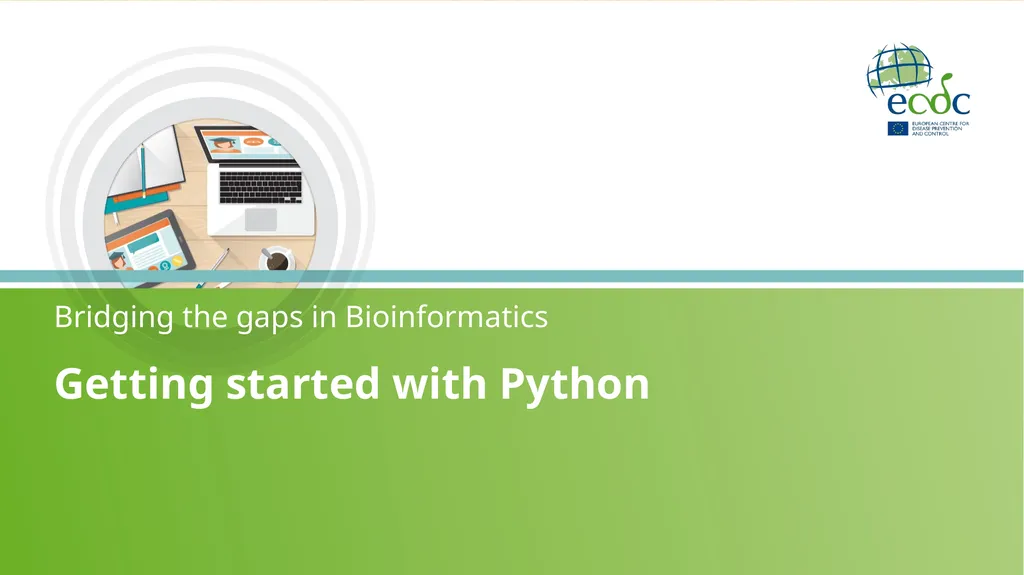
Author : liane-varnes | Published Date : 2025-05-19
Description: Getting started with Python Bridging the gaps in Bioinformatics Objectives Specific objectives of this session: Get familiar with Python Hands-on experience with Python Prepare you for the future exercises You will use Python and BashDownload Presentation The PPT/PDF document "" is the property of its rightful owner. Permission is granted to download and print the materials on this website for personal, non-commercial use only, and to display it on your personal computer provided you do not modify the materials and that you retain all copyright notices contained in the materials. By downloading content from our website, you accept the terms of this agreement.
Here is the link to download the presentation.
"Getting started with Python Bridging the gaps in"The content belongs to its owner. You may download and print it for personal use, without modification, and keep all copyright notices. By downloading, you agree to these terms.






![[READING BOOK]-Illustrated Guide to Python 3 A Complete Walkthrough of Beginning P...](https://thumbs.docslides.com/970240/reading-book-illustrated-guide-to-python-3-a-complete-walkthrough-of-beginning-python-with-unique-illustrations-showing-how-python-really-works-now-covering-python-3-6-treading-on-python.jpg)
![[eBOOK]-Getting Started with Python for the Internet of Things Leverage the full p...](https://thumbs.docslides.com/970607/ebook-getting-started-with-python-for-the-internet-of-things-leverage-the-full-potential-of-python-to-prototype-and-build-iot-projects-using-the-raspberry-pi.jpg)
![[DOWLOAD]-Python Programming for Beginners An Introduction to the Python Computer ...](https://thumbs.docslides.com/970637/dowload-python-programming-for-beginners-an-introduction-to-the-python-computer-language-and-computer-programming-python-python-3-python-tutorial.jpg)
![[BEST]-Getting Started with Python for the Internet of Things: Leverage the full p...](https://thumbs.docslides.com/975222/best-getting-started-with-python-for-the-internet-of-things-leverage-the-full-potential-of-python-to-prototype-and-build-iot-projects-using-the-raspberry-pi.jpg)
![[READING BOOK]-Getting Started With the SAS System: Version 8 (Getting Started Ser...](https://thumbs.docslides.com/980109/reading-book-getting-started-with-the-sas-system-version-8-getting-started-series-cary-n-c.jpg)
![[FREE]-Getting Started With the SAS System: Version 8 (Getting Started Series (Car...](https://thumbs.docslides.com/989708/free-getting-started-with-the-sas-system-version-8-getting-started-series-cary-n-c.jpg)